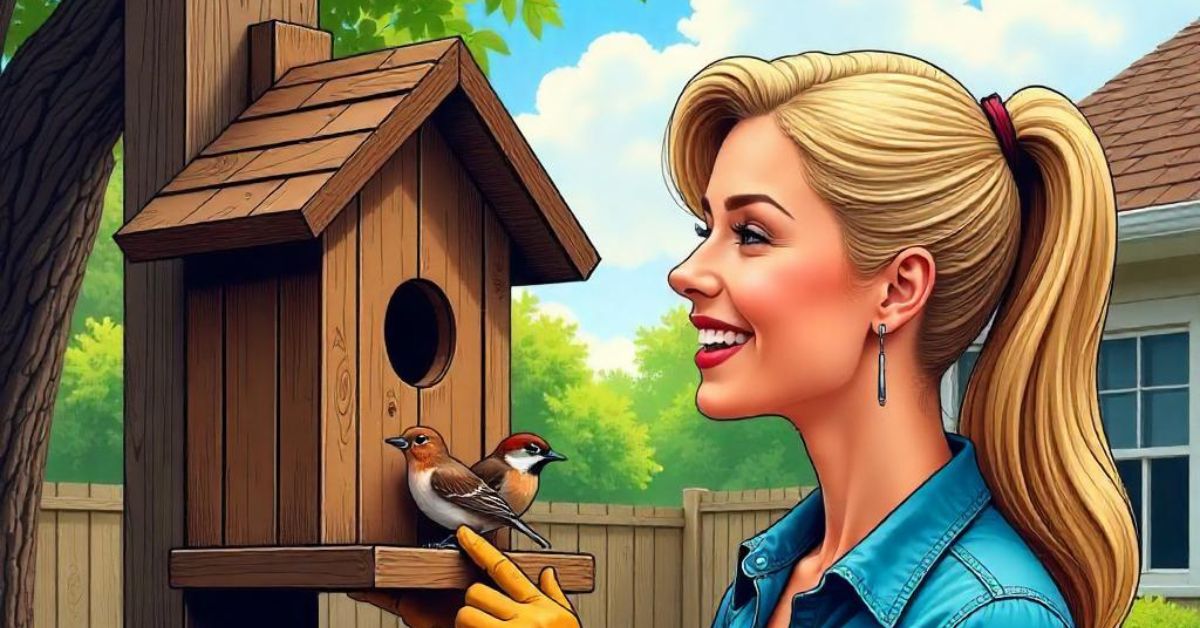Why Proper Placement Matters
If you’ve ever excitedly hung a wren house in your backyard only to watch it sit empty all season, you know the frustration. As a bird enthusiast who’s tested dozens of wren house placements (and made plenty of mistakes), I’ve learned that these tiny, energetic birds are surprisingly particular about where they nest.
The difference between an ignored birdhouse and one bustling with wren activity often comes down to a few critical placement details. In this guide, we’ll dive deep into:
- The ideal height, direction, and location (backed by ornithology studies)
- Common mistakes that deter wrens (and how to fix them)
- Seasonal adjustments for better success
- Real-world tips from experienced birders
By the end, you’ll know exactly where to place your wren house to maximize your chances of attracting these delightful little songbirds.
The Perfect Height – Why 5 to 10 Feet Is the Sweet Spot
Why Height Matters
Wrens are small birds with big survival instincts. Their nesting height is a careful balance between:
✅ Safety from ground predators (cats, raccoons, snakes)
✅ Avoiding aerial hunters (hawks, owls)
✅ Easy access for feeding and nesting
Research from the Cornell Lab of Ornithology shows that wrens prefer nesting between 5 and 10 feet off the ground. Here’s why:
- Below 5 feet: Too risky. Cats and raccoons can easily raid the nest.
- Above 10 feet: Wrens feel exposed to hawks and harsh winds.
How to Measure the Right Height Without a Ladder
Not everyone has a tall ladder handy. Here’s a simple trick:
- Use a long pole or broomstick marked at 5, 7, and 10 feet.
- Hold it vertically against the mounting spot.
- Adjust until the birdhouse sits in the ideal range.
Pro Tip: If mounting on a tree, avoid low branches where squirrels can jump across.
Direction Matters – Should Your Wren House Face East, West, or North?
The Best Direction for Wren Houses
After tracking wren nesting habits for years, I’ve found that east-facing houses have the highest occupancy rates. Here’s why:
- Morning sun warms the nest gently, helping eggs stay at the right temperature.
- Avoids harsh afternoon heat (which can overheat chicks in summer).
- Reduces wind exposure (wrens prefer sheltered spots).
Alternative Directions:
- North-facing: Works well in hot climates (Texas, Arizona).
- South-facing: Only recommended in cooler northern states.
Avoid West-facing houses they get the strongest afternoon sun and can turn into tiny ovens.
A Quick Test for Your Wren House
On a sunny afternoon, feel the outside of the birdhouse. If it’s hot to the touch, consider:
- Adding a small roof overhang for shade.
- Moving it slightly to face northeast.
Location, Location, Location – Where to Hang Your Wren House
Ideal Spots in Your Yard
Wrens like edges and transition zones, such as:
✔ Near shrubs or small trees (10-15 feet away) – provides quick cover from predators.
✔ Along fence lines – gives them a clear flight path.
✔ Garden borders – close to insects (their favorite food).
Places to Avoid
🚫 Right next to bird feeders – too much traffic stresses wrens.
🚫 Near loud areas (driveways, playgrounds) – noise scares them off.
🚫 Dense forest – not enough open space for foraging.
Pro Tip: If squirrels are a problem, mount the house on a metal pole with a baffle instead of a tree.
Should Wren Houses Be in Sun or Shade?
The Goldilocks Rule: Not Too Hot, Not Too Cold
Wrens need:
- Morning sun (helps regulate egg temperature).
- Afternoon shade (prevents overheating).
How to Check:
- Monitor the house at different times of day.
- If it’s baking in the sun by 3 PM, add shade (e.g., a leafy branch nearby).
When to Put Up a Wren House (Timing Is Everything)
Best Time to Install
- Early spring (March-April) in most of the U.S.
- Late February in warmer states (Florida, California).
Why? Male wrens scout nesting sites early. If you’re too late, they’ll pick another spot.
Should You Leave Old Nests Inside?
✅ Yes! Wrens often reuse old nests (unlike bluebirds).
❌ No need to clean it out unless pests (mites) were an issue last year.
Troubleshooting – Why Aren’t Wrens Using My House?
Common Reasons + Fixes
🔹 Too close to human activity? Move it to a quieter spot.
🔹 Wrong direction? Adjust to face east.
🔹 Too low/high? Rehang between 5-10 feet.
Bonus Trick: Play wren calls nearby to attract scouts.
Final Thoughts: Patience Pays Off
Wrens can be picky, but when you get the placement right, they’ll reward you with cheerful songs and endless backyard entertainment.
Now It’s Your Turn!
Have you had success (or funny failures) with wren houses? Share your story in the comments—I’d love to hear what worked for you!
P.S. Need a wren house? Check out my DIY Wren Birdhouse Plans for an easy weekend project.
Getting wren house placement right makes all the difference between an empty birdhouse and a lively nesting spot filled with cheerful wrens. By following these science-backed tips—mounting at 5-10 feet, facing east, and placing near protective cover—you’ll create the perfect home for these energetic little birds.
Remember, patience is key! If wrens don’t move in right away, tweak the location slightly or try playing wren calls to attract scouts. Once they settle in, you’ll enjoy their melodic songs and lively antics all season long.
Ready to transform your backyard into a wren paradise? Start with proper wren house placement today, and share your success stories in the comments.
